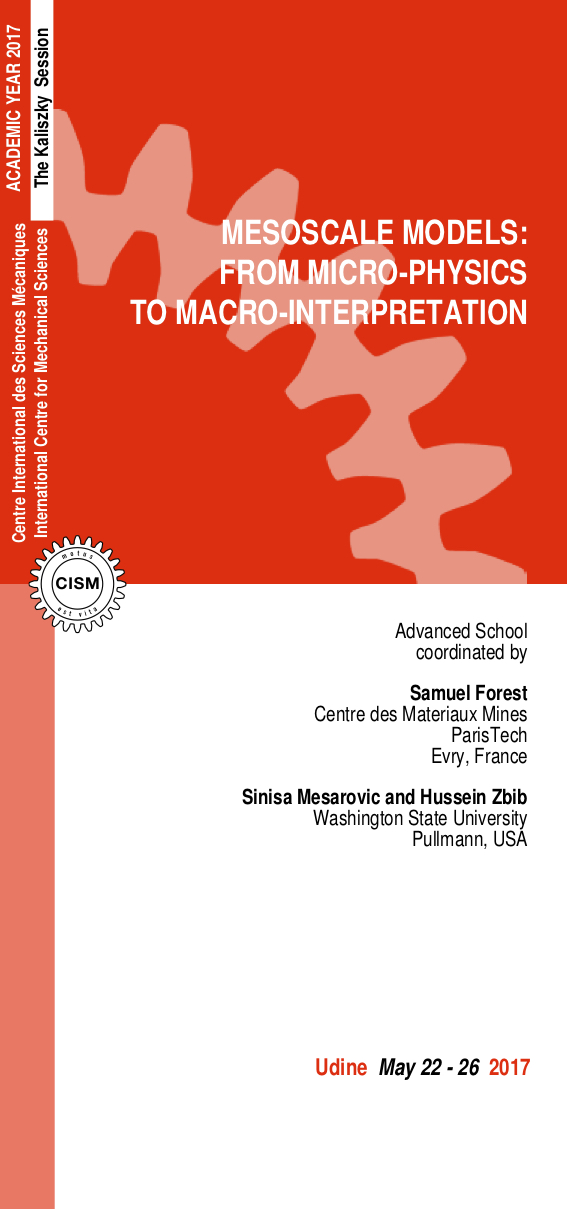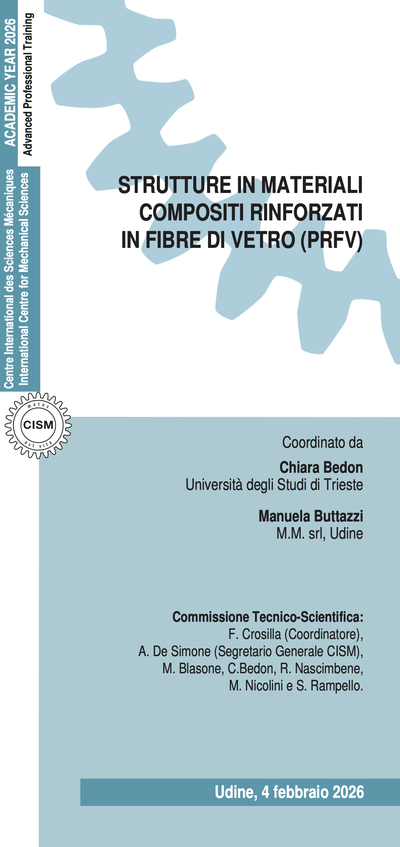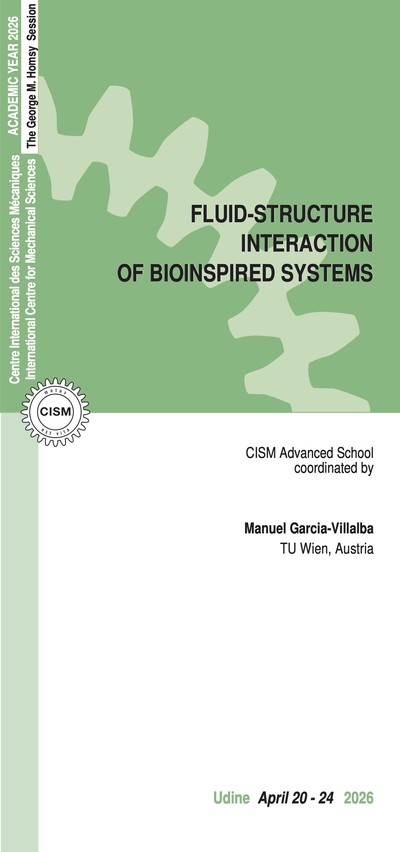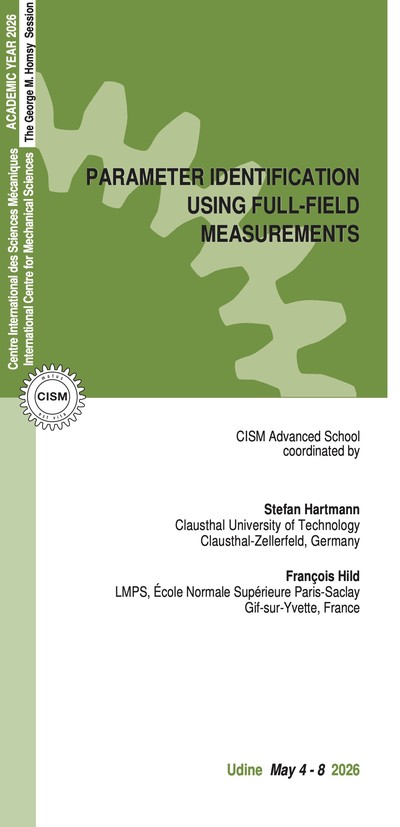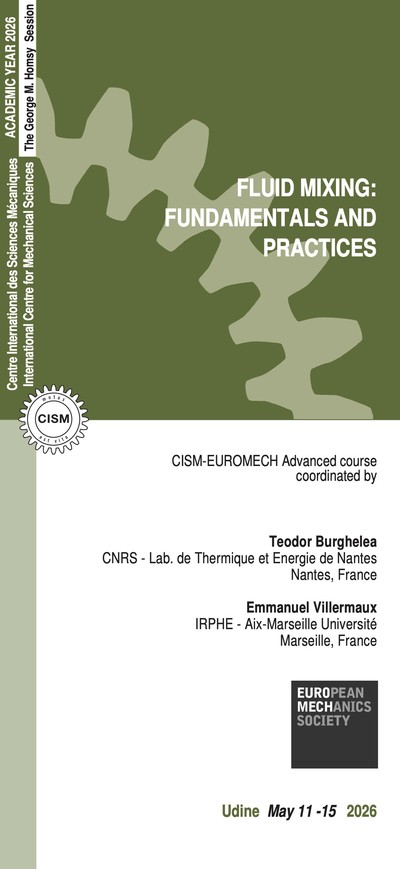In the past few decades, significant advances in computational modeling of materials on multiple length and time scales have brought about the realization that the critical questions are often encountered on the mesoscale: the length and time scales much larger than atomic, yet much smaller than macroscopic observables. This is the focus area of the course. We select four broad areas representative of the field in the sense that: (a) Significant progress has been made in the past two decades, (b) Some outstanding problems remain as a challenge for future researchers, and, (c) The past efforts have been multidisciplinary, and future efforts are expected to remain such, involving researchers in engineering disciplines, physics and mathematics. - Dislocation plasticity is an extremely challenging problem, owing to: geometrical and statistical complexity of dislocation assemblies, long-range interactions of dislocations, and, still poorly understood dislocation – interface interactions. Several levels of mathematical analysis have emerged over the years involving different level of approximation and computational costs. - Structure and motion of interfaces in solids and fluids, and their role in the deformation of polycrystalline assemblies remain active area of research. For problems with mobile interfaces and topological discontinuities, the phase field formulations have emerged as the most effective methods, but they require solid physical and mathematical foundations, which is typically accomplished with firm mathematical grounding in the corresponding sharp interface model. - Foundations of continuum theories: Mixing, composites and generalized continua. Moving interfaces typically require mass transport, so that mass diffusion models naturally fall within the scope of phase field models. However, the presence of lattice structure in crystalline solids implies fundamental differences between diffusion in fluids and diffusion in solids and thus, different continuum formulations. Higher order continua have been proposed in connection with most problems discussed in this course. - Granular matter is the second most manipulated type of matter after water, with a range of applications, including soils, powders, colloids, amorphous metals and alloys. Depending on the state, they exhibit solid-like or liquid-like properties. Microscopically, granular materials are strongly disordered and require the identification of new variables and descriptors to relate rheological features such as dilatancy (volume change under shear) or strain localization to vortex flow patterns and force chains. The course is addressed to young researchers including doctoral students, postdocs and early career faculty. Upon completion of the course, attendees will acquire deeper understanding of the following questions. - How far have the understanding and mesoscale modeling advanced in recent decades? - What are the key open questions that require further research? - What are the mathematical and physical requirements for a mesoscale model intended to provide either insight or a predictive engineering tool.
M.A. Tschopp, D.E. Spearot, D.L. McDowell, Influence of grain boundary structure on dislocation nucleation in fcc metals, Dislocations in Solids, A Tribute to F.R.N. Nabarro, Ed. J.P. Hirth, Elsevier Publ.14 (2008) 43-139. D.L. McDowell, Viscoplasticity of heterogeneous metallic materials, D. L. McDowell, Materials Science and Engineering R: Reports, 62(3), 67-123, 2008. D.L. McDowell, A perspective on trends in multiscale plasticity,” Int. Journal of Plasticity, Vol. 26, No. 9, 2010, pp. 1280-1309. F. Radjaï and F. Dubois (editors), Discrete-element modeling of granular materials, Wiley, 2011. B. Andreotti, Y. Forterre, O. Pouliquen, Granular Media: Between Fluid and Solid, Cambridge University Press, 2013. F. Boyer, E. Guazzelli, and O. Pouliquen. Unifying suspension and granular rheology, Physical Review Letters, 2011, 107, 188301. Groma, I. Statistical physical approach to describe the collective properties of dislocations. In Multiscale Modelling of Plasticity and Fracture by Means of Dislocation Mechanics, 2010 Springer, Vienna. Groma, I, Csikor, FF, Zaiser, M. Spatial correlations and higher-order gradient terms in a continuum description of dislocation dynamics. Acta Mater. 51:(5) pp. 1271-1281. (2003) Groma I, Györgyi G, Ispánovity P D, Variational approach in dislocation theory, Phil. Mag, 90:(27-28) pp. 3679-3695. (2010). J. Besson, G. Cailletaud, J-L. Chaboche, S. Forest, M. Blétry, Springer, Nonlinear mechanics of materials, 2010, Series: Solid Mechanics and Its Applications , Vol. 167, 433 p., Hardcover ISBN: 978-90-481-3355-0. S. Forest, Micromorphic approach for gradient elasticity, viscoplasticity and damage , ASCE Journal of Engineering Mechanics, vol. 135, pp. 117-131, 2009. V. de Rancourt, B. Appolaire, S. Forest and K. Ammar, Homogenization of viscoplastic constitutive laws within a phase field approach Journal of the Mechanics and Physics of Solids, vol. 88, pp. 291-319, 2016. Zbib, H.M., Rhee, M. and Hirth, J.P. On plastic deformation and the dynamics of 3D dislocations. Int. J. Mech. Science, 40, 113-127, 1998. Zbib, H.M., Diaz de la Rubia and Bulatov, V. A multiscale model of plasticity based on discrete dislocation dynamics. ASME J. Eng. Mater, Tech., 124, 78-87, 2002. Zbib, H.M., Overman, C., Akasheh, F., Bahr, D.F. Analysis of plastic deformation in nanoscale metallic multilayers with coherent and incoherent interfaces. Int. J. Plasticity, 27, 1618-1638, 2011. Mesarovic, S.Dj. 2016 Lattice continuum and diffusional creep. Proc. R. Soc. A 472: 20160039. Lowengrub, J. & Truskinovsky, L. 1998 Quasi-incompressible Cahn-Hilliard fluids and topological transition. Proc. R. Soc. Lond. A454, 2617-2654. Mesarovic, S.Dj. 2010 Plasticity of crystals and interfaces: From discrete dislocations to size-dependent continuum theory. Theor. Appl. Mechanics 37(4), 289-332.
Samuel Forest (None)
6 lectures on: Micromorphic and generalized continua: Kinematics and constitutive laws, Links to gradient models, Strain gradient models for capillarity in fluids. Size effects in the plasticity of crystals and polycrystals. Phase field models and viscoplasticity: Coupling diffusive phase transformations and the elasto-viscoplasticity, Homogenization for diffuse interface models, Application to dislocation and diffusional creep and oxidation. Size effects in composites: Representative volume element size for random composites, Plasticity of architectured materials (porous, cellular and auxetic composites), Generalized continua for composites under strain gradients.Istvan Groma (None)
6 lectures on: Field theory of dislocations: Individual dislocations, Dislocation density tensor, Incompatibility, Stress potential, Variational approach, Beyond Hooke’s law. Statistical dislocation dynamics: Dislocation assemblies, From discrete dislocations to continuum theory, Phase field formulation, Curved dislocations. Dislocation patterning: Experimental observations, Scaling, Similitude and similarities with other systems, Early models, Current state of understanding.David McDowell (None)
6 lectures on: Atomistic modeling of crystalline nanostructures: Fundamental aspects, Visualization methods, Crystalline interfaces, Dislocation nucleation and mediation. Atomistic-continuum coarse-graining: Spatial coarse-graining, Zero temperature scaling and finite temperature effects, Temporal scaling based on transition state theory. Multiscale, multilevel crystal plasticity: from nm to mm: Crystal plasticity theory and physics, Generalizations and applications.Sinisa Mesarovic (None)
5 lectures on: Physical foundations of continuum theories: The atomic/particle level interpretation of continuum kinematics and thermodynamics: mixing of fluids (mass continuum), diffusion in crystalline solids (lattice continuum), and granular flow. Phase field models for multiphase fluids: Mathematical and computational aspects, Compositionally-compressible flow model and the incompressible flow model. Capillary flows: Phase field and molecular kinetics models for diffusive motion of the triple line. From dislocation mechanics to continuum crystal plasticity: Thermodynamic coarsening of dislocation mechanics: long- and short-range interactions, interfaces, representations of size-dependent energy.Jean-Noël Roux (None)
6 lectures on: Granular micromechanics: Contact laws, Packing Geometry, Friction, Rolling, Grain shape, Adhesion, Packing states. Granular rheology: Solid-like and fluid-like regimes, Dimensional analysis, Consolidation, Dilatancy, Critical state. Elasticity and plasticity of solid granular matter: Definition of elastic moduli, Internal state variables and their relations to stresses and strains. Viscoplasticity and granular liquid flows: Generalization of the critical state to inertial flows, Dense suspensions, Instabilities, Boundary effects.Hussein Zbib (None)
6 lectures on: Discrete dislocation dynamics (DDD): Formulation of the method and applications, Measurements of local quantities, Interaction with boundaries. Multiscale dislocation dynamics: Incorporation of DDD into the 3D plastic continuum. Continuum dislocation dynamics (CDD): The method and its connection to DDD, Implementation in crystal plasticity, Examples: size effect, deformation of polycrystals, dislocation patterning, rate effects, and irradiation effects.The registration fee is 575.00 Euro + VAT taxes*, where applicable (bank charges are not included). The registration fee includes a complimentary bag, four fixed menu buffet lunches (on Friday upon request), hot beverages, downloadable lecture notes and wi-fi internet access. Applicants must apply at least one month before the beginning of the course. Application forms should be sent on-line through our web site: http://www.cism.it. A message of confirmation will be sent to accepted participants. If you need assistance for registration please contact our secretariat. Applicants may cancel their course registration and receive a full refund by notifying CISM Secretariat in writing (by email) no later than two weeks prior to the start of the course. If cancellation occurs less than two weeks prior to the start of the course, a Euro 50.00 handling fee will be charged. Incorrect payments are subject to Euro 50.00 handling fee. A limited number of participants from universities and research centres who are not supported by their own institutions can be offered board and/or lodging in a reasonably priced hotel or student dormitory, if available. Requests should be sent to CISM Secretariat by March 22, 2017 along with the applicant's curriculum and a letter of recommendation by the head of the department or a supervisor confirming that the institute cannot provide funding. Preference will be given to applicants from countries that sponsor CISM. Information about travel and accommodation is available on our web site, or can be mailed upon request.
* Italian VAT is 22%.
